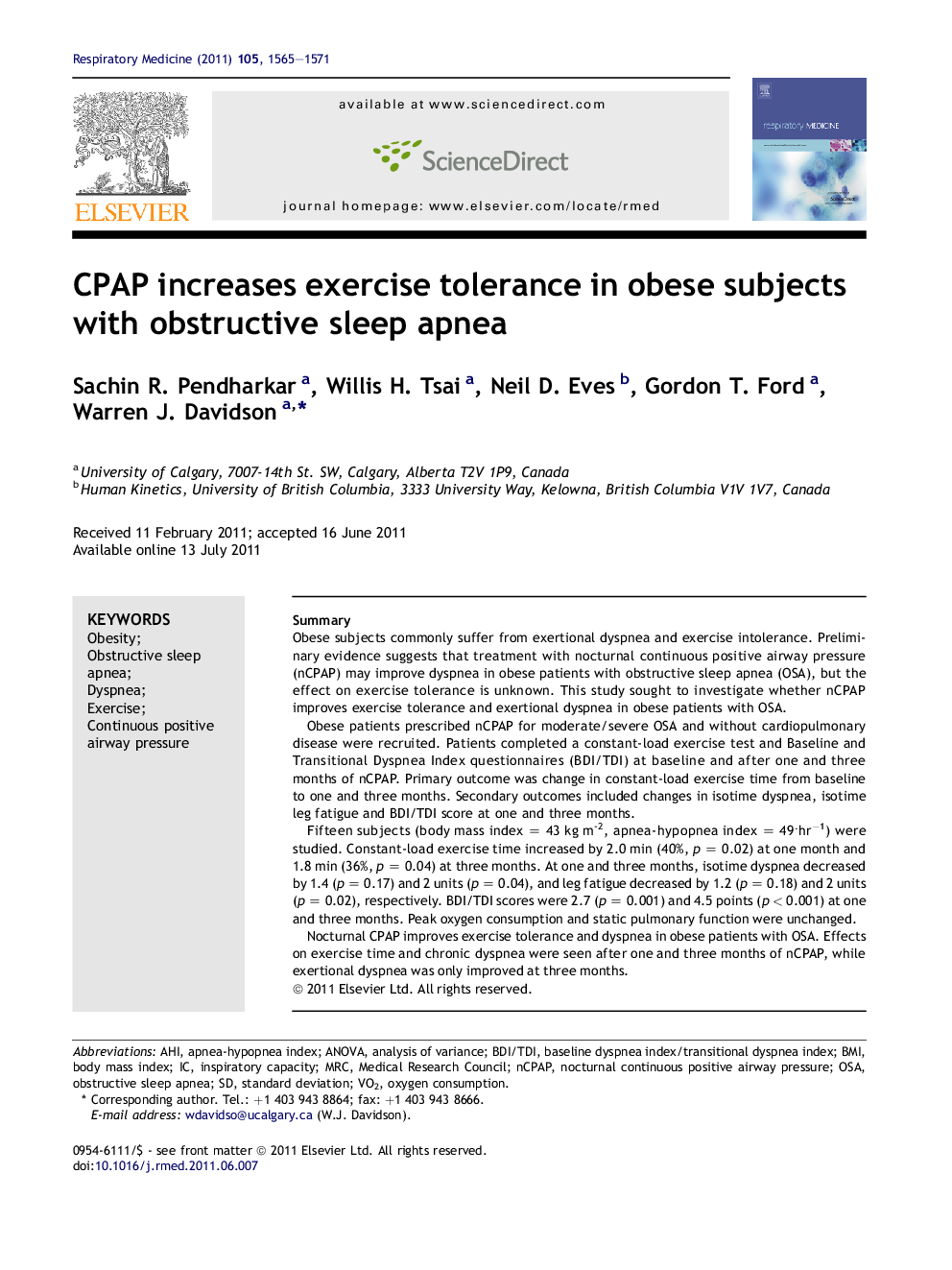| کد مقاله | کد نشریه | سال انتشار | مقاله انگلیسی | نسخه تمام متن |
|---|---|---|---|---|
| 4210352 | 1280583 | 2011 | 7 صفحه PDF | دانلود رایگان |

SummaryObese subjects commonly suffer from exertional dyspnea and exercise intolerance. Preliminary evidence suggests that treatment with nocturnal continuous positive airway pressure (nCPAP) may improve dyspnea in obese patients with obstructive sleep apnea (OSA), but the effect on exercise tolerance is unknown. This study sought to investigate whether nCPAP improves exercise tolerance and exertional dyspnea in obese patients with OSA.Obese patients prescribed nCPAP for moderate/severe OSA and without cardiopulmonary disease were recruited. Patients completed a constant-load exercise test and Baseline and Transitional Dyspnea Index questionnaires (BDI/TDI) at baseline and after one and three months of nCPAP. Primary outcome was change in constant-load exercise time from baseline to one and three months. Secondary outcomes included changes in isotime dyspnea, isotime leg fatigue and BDI/TDI score at one and three months.Fifteen subjects (body mass index = 43 kg m-2, apnea-hypopnea index = 49.hr−1) were studied. Constant-load exercise time increased by 2.0 min (40%, p = 0.02) at one month and 1.8 min (36%, p = 0.04) at three months. At one and three months, isotime dyspnea decreased by 1.4 (p = 0.17) and 2 units (p = 0.04), and leg fatigue decreased by 1.2 (p = 0.18) and 2 units (p = 0.02), respectively. BDI/TDI scores were 2.7 (p = 0.001) and 4.5 points (p < 0.001) at one and three months. Peak oxygen consumption and static pulmonary function were unchanged.Nocturnal CPAP improves exercise tolerance and dyspnea in obese patients with OSA. Effects on exercise time and chronic dyspnea were seen after one and three months of nCPAP, while exertional dyspnea was only improved at three months.
Journal: Respiratory Medicine - Volume 105, Issue 10, October 2011, Pages 1565–1571